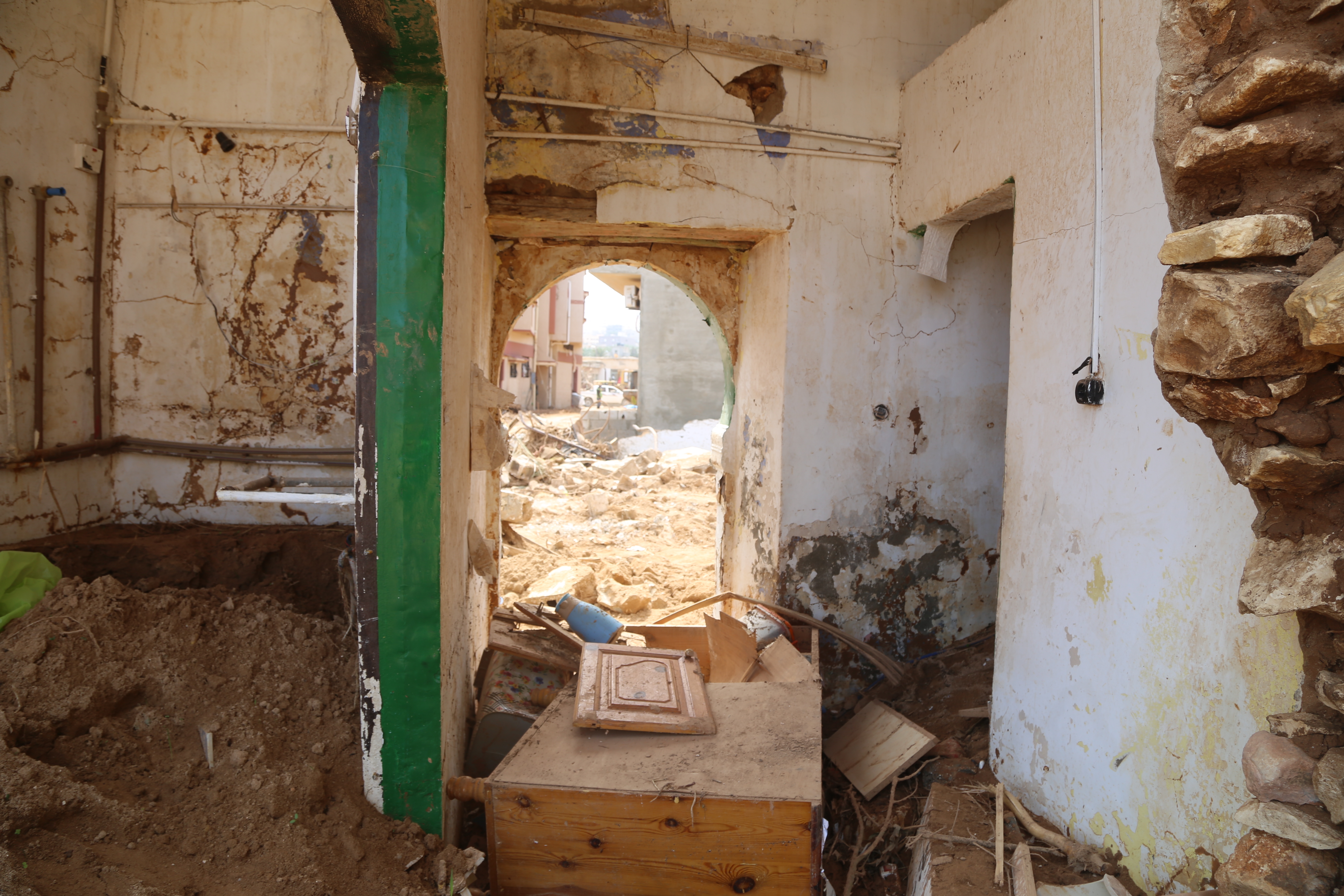Harnessing Innovation for Disaster Resilience: The Derna Floods– Part I
December 20, 2023

Debris leftovers from the floods that had taken over the area.
On 10 September 2023, the eastern region of Libya faced an unparalleled natural disaster wrought by Storm Daniel, a fierce Mediterranean cyclone. This calamity took a devastating toll on the port city of Derna, leading to incredible loss of life and infrastructure and the displacement of thousands.
This blog explores the essential aspects of disaster management with a focus on the role of innovation in enhancing resilience, particularly Early Warning Systems and Preparedness. It underscores the urgent necessity for disaster preparedness in the context of Libya.
Early Warning Systems and Preparedness
As the menacing Mediterranean storm Daniel bore down on eastern Libya, residents of Derna found themselves caught in a web of uncertainties. This generation of people, who had never experienced a natural disaster of this scale, faced the daunting challenge of comprehending - and responding to - the unprecedented events unfolding around them.
Adequacy of Existing Warning Systems
In the lead-up to the catastrophe, residents received mixed signals, leaving them ill-prepared for the impending deluge. On the one hand, a curfew was imposed in Derna and other eastern areas, and many residents received text messages on their phones advising them to remain in their homes. Simultaneously, other official statements urged coastal area evacuations due to the risk of a surge from the sea. This lack of clarity left residents without a clear directive and exposed them to the full force of the disaster.
The Significance of Comprehensive Early Warning Systems

Effective early warning systems are crucial in reducing disaster risks and safeguarding vulnerable communities against extreme weather events. A well-designed system encompasses several key components. Firstly, it must deliver timely and accurate alerts to residents, government authorities, and relevant stakeholders, presenting unified, clear, and actionable information. Utilizing multiple communication channels, such as mobile alerts, sirens, radio broadcasts, TV channels, and social media, ensures widespread dissemination, reaching diverse audiences, including those with limited access to technology. Additionally, an impactful system goes beyond weather-related information; it conveys the potential impact of extreme events, providing a comprehensive understanding of risks.
Lastly, seamless coordination and communication among meteorological agencies, disaster management authorities, and local governments are vital, ensuring efficient dissemination of warnings and prompt activation of response plans.
Best Practices for Warning Systems
In regions historically prone to extreme weather events, several countries have implemented exemplary early warning systems to safeguard their populations from natural disasters. Japan, for instance, has a sophisticated system that utilizes advanced technology to provide accurate and timely tsunami warnings, allowing residents to seek higher ground or evacuate coastal areas.
Similarly, the United States employs the Integrated Public Alert and Warning System (IPAWS), disseminating alerts through various communication channels, including mobile phones, television, and radio. IPAWS plays a crucial role in warning residents about severe weather events, such as tornadoes and hurricanes.
Libya is grappling with a surge in extreme weather events and disasters, partly attributed to the impacts of climate change. As a result, the country needs to actively develop its early warning capabilities to address the emerging threats posed by floods and other environmental changes.
The Role of Public Awareness: Changing for Climate Change
Early warning systems are crucial for disaster management, especially in the face of increasing climate-related hazards. Effective public awareness and preparedness initiatives empower residents to respond appropriately to warnings and mitigate the effects of climate change.
The Derna tragedy underscores the need for enhanced public education and preparedness efforts in light of environmental instability, including adequate planning, evacuation drills, and awareness programs that can instil instinctive action in the face of disaster, especially in a changing climate.
In the Heart of the Crisis: UNDP's Continuous Support for Derna

During times of crisis, UNDP's presence on the ground becomes instrumental. Collaborating closely with local authorities, concentrating on planning and delivering essential services, supporting livelihoods, and fostering social cohesion. UNDP has strengthened its partnership with the Benghazi Derna Construction Fund to provide technical support and build capacities of the fund to operate with high standards of efficiency and effectiveness while leading the reconstruction needs of Derna and other affected areas.

 Locations
Locations